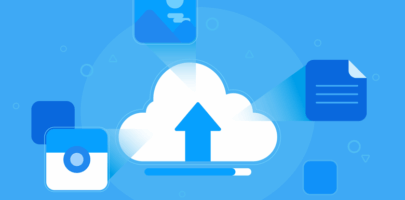Get news, updates, and insights delivered straight to your inbox.
Distributed Marketing 101: What It is & Why It Works

Marketing online is an ever-evolving landscape of tactics that must be used together to form an effective outreach strategy. The key to staying competitive is spotting useful new ways to reach your audience efficiently. Distributed marketing is an innovative way to increase your relevant content, collaborate with other businesses, and decrease your labor spent generating the content. Those three benefits together make it especially effective, and the earlier you adopt it, the more it can lend your company a competitive edge.
What Is Distributed Marketing?
Distributed marketing is a set of marketing templates, products, and strategies you make available to other businesses so they can market your brand. It is not unique to digital marketing, although it is gaining popularity in that arena. One long-running example of distributed marketing is branded window signage for products. You can hardly pass a gas station without Coca-Cola or Pepsi branded signs placed for effect and increased sales by the local business owner. That’s generally how it works, and you can apply the principles at play to in-store displays or even third-party content generated for your site, and social media feeds.
How Do Distributed Marketing Tactics Work Online?
A local franchise owner sharing Facebook posts from the corporate page to the location pages for their storefronts is a great example of the most basic kind of marketing distribution online, but there are more sophisticated ways to supercharge the benefits it brings. Using a distributed marketing platform helps organizations to distribute customizable marketing templates, and provides branded portals for franchisees, partners, other locations to grab marketing materials.You set up the assets available and post marketing templates, leaving open just what you want clients, branches, or other affiliates to customize.
Distributed Marketing & Brand Control
Investing in a distributed marketing platform is buying into a more specific version of a digital asset management system. Those systems control assets and content creation on professionally curated sites of all kinds already, but they are not generally set up for third-party access like a distributed marketing platform. Here are a few examples of how a distributed marketing platform can be used in different clients:
- Your travel agency creates brand-approved posts about travel package deals. You can offer clients the ability to customize information like the booking contact, price, and location, allowing your tour package affiliates to create their own posts when they have specials available.
- A local music venue can set up approved photo assets of the venue as well as copy regarding stage size or cover prices while leaving certain elements such as dates, names, and other important information open for customization.
- Realtors acting as buyers’ agents can post information about new listings across social media platforms using standardized posts. With customizable fields they are able to tailor the posts to a particular property.
What Is the Product of Successful Distributed Marketing?
This question can also be phrased as why does it work, or maybe as a question about how you know it has worked. Successful marketing distribution raises revenues for both the company producing the branded material and the affiliates or vendors utilizing it. The brand recognition for established customers on either side works both ways, drawing new sales for each. If your approved posters are happy about the results and your own customer base or sales are increasing enough to produce a return, that’s success.
Distributed Marketing Challenges & Limitations
Like any marketing tactic, distribution faces limits to its effectiveness. Some of these are challenges, and you can improve your performance against those challenges to maximize the rewards involved in using this approach. Some are just limitations on the use cases for this tactic, in which case you should build in other tactics that serve your needs alongside distributed marketing to have a well-rounded approach. The three most common issues are:
- Implementing the software and educating approved content creators about access
Solution: Use top talent to help you. Who is it in this case? Your distributed marketing provider! Consult with them on your concerns and have them help you implement your DM solution on your organization. That’s what they’re there for! - Managing the consistency of the content created
Solution: This is a big one that a lot of companies face. When it comes to effective marketing collateral management, the key is to develop written processes that help manage team marketing templates and user access to different assets. - Proving the effectiveness of the strategy
Solution: One of the great things about a DM platform is the analytics gathered from different assets. Use these insights to make informative decisions like “What assets should we optimize?”, “What assets don’t get much engagement?”, or “What assets are users not using and why?”.
With the right implementation plan, all of these challenges can be minimized, but there will always be some residual limits placed by them. Not every potential affiliate or client will be willing to participate, and there are always going to be some challenges to the analysis of the numbers supporting this plan.
How Distributed Marketing Platforms Address Challenges
Consistency is the easiest issue to address with a distributed marketing platform because you can control everything about the content produced. The simplicity of the interface and available support help with education and outreach as well. Last of all, a unified portal for all your third-party creators means a single place to measure the results of their participation, from post impressions to sales conversions. The next step in learning how to use distributed marketing is talking to someone who can set you up for success with your own installation.
You might also like


